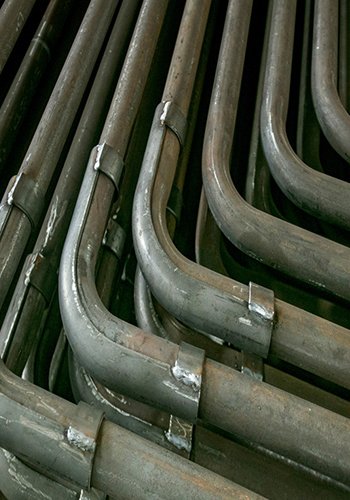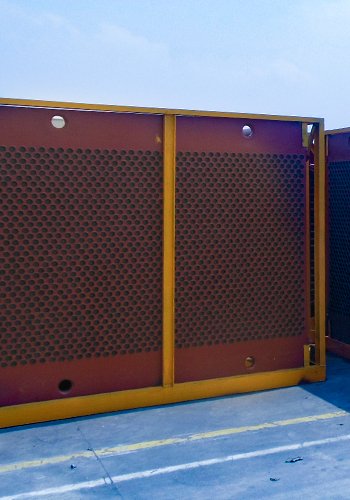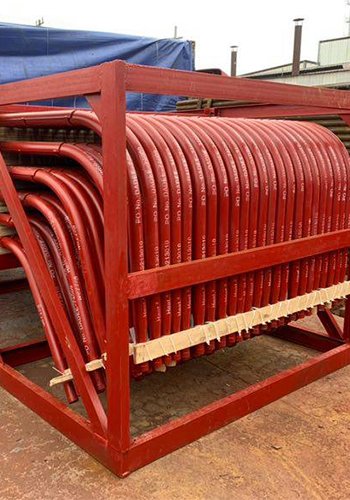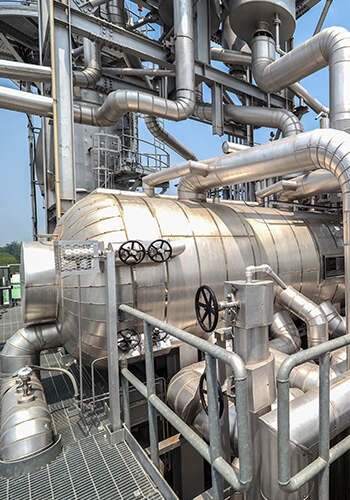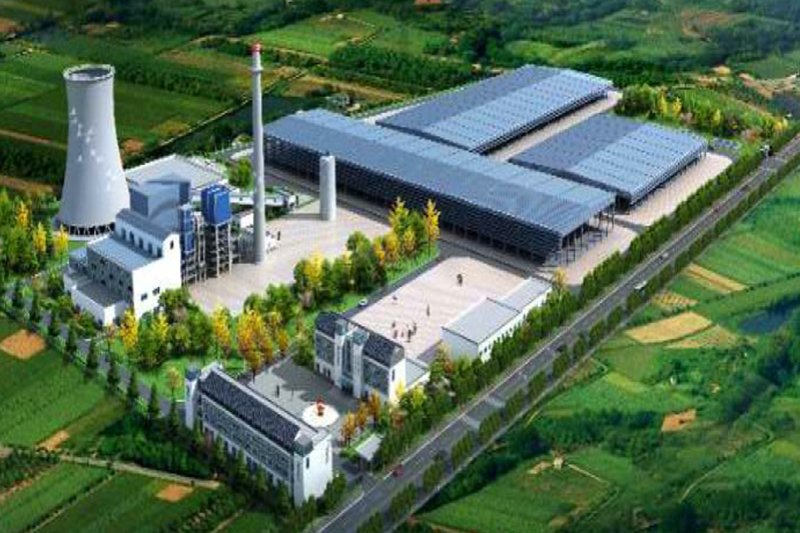A few years back, China introduced the idea of creating a resource-efficient society. Even though our nation boasts vast coal reserves, the relentless increase in consumption means that coal, being a non-renewable resource, could eventually run scarce. If we take a closer look at Thermal Power Plants, they’re major consumers of coal, and it’s vital for operators to pay heed to energy conservation and reduced consumption.
Enter circulating fluidized bed (CFB) technology, a newer approach to coal-fired operations. This innovation has gained widespread adoption in numerous thermal power plants due to its impressive adaptability, efficiency, and minimal environmental impact. However, it’s essential to acknowledge that CFB technology comes with a downside – it tends to consume a significant amount of power and coal.
To truly preserve our resources, it’s crucial that we enhance and modernize CFB boiler technology. Consequently, delving into research aimed at achieving energy savings and consumption reduction with CFB becomes of paramount importance.
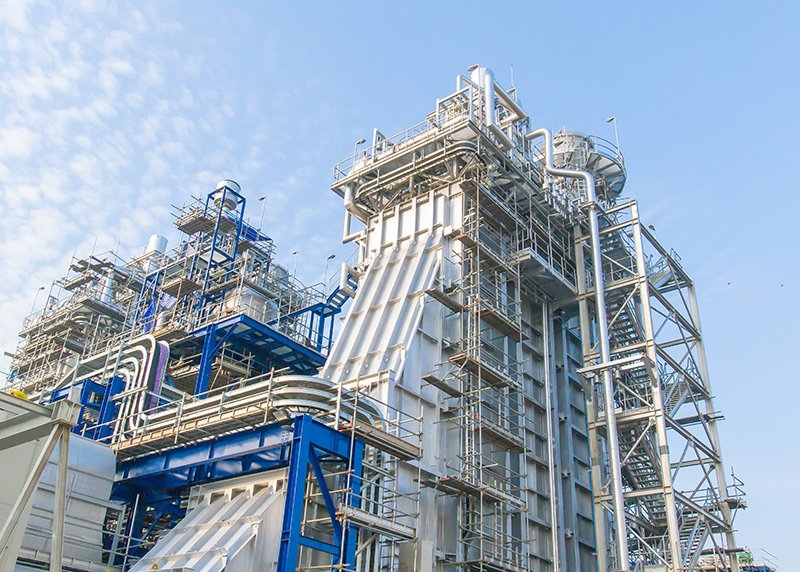
1 Overview of CFB boiler
Let’s dive into the world of CFB boilers! These boilers operate in a unique way, employing a semi-suspended combustion method that blends the advantages of both fluidized and fixed combustion modes, making them distinct from the traditional chain grate boilers.
This semi-suspension combustion technique has garnered recognition both domestically and internationally, emerging as a leading clean coal combustion technology. CFB boilers boast a host of advantages, including their remarkable adaptability to various raw materials, potent desulfurization capabilities, low emission rates of nitrogen oxide, and easy adjustability.
The magic behind desulfurization in CFB boilers lies in a clever principle: limestone and fuel undergo a continuous cycle of combustion. Over time, the limestone particles become finer and finer. When they reach a certain degree of fineness, they’re whisked away from the combustion process. Throughout this intricate dance, the furnace temperature can soar to around 900°C. This high heat not only fully decomposes the limestone but also effectively curbs the formation of sulfides, resulting in a highly efficient desulfurization process. It’s like a choreographed performance that ensures cleaner and greener coal combustion.
2 Characteristics of CFB boiler
2.1 High Coal Combustion Rate:
In the realm of CFB boilers, one standout feature is their remarkable coal combustion efficiency. This dynamic fluidized combustion system keeps a multitude of ash particles in constant circulation within the furnace. Surprisingly, the newly introduced coal resources only occupy a small fraction of the bed material. This unique arrangement promotes superior heat exchange within the furnace, creating an environment where coal gets hot and fiery in an efficient manner. What’s particularly noteworthy is that unburned coal particles get a chance to shine, as they spend more time in the furnace thanks to these repeated cycles. This extended exposure allows them to participate in heat exchange multiple times, achieving the ultimate goal of complete combustion. Whether dealing with high-sulfur coal, coal from washing processes, or coal gangue, CFB technology ensures that these resources burn fully, thereby enhancing resource utilization.
2.2 Robust Regulation Capability:
CFB boilers exhibit an impressive level of control. The ash particles circulating at high temperatures within the furnace act as heat reservoirs, ensuring that the furnace temperature remains stable. When new coal is added, it swiftly provides the necessary heat for rapid preheating and ignition. This flexibility means that CFB boilers can operate at very low loads, making load regulation a breeze. Whenever there’s a need to adjust the load due to changing circumstances, it can be accomplished simply by tweaking the coal feed rate and flow.
2.3 Environmental Friendliness:
CFB technology excels in environmental conservation. These boilers are versatile in their ability to tackle both coal desulfurization and denitrification. Notably, CFB’s critical advantage lies in its effective removal of sulfur and nitrogen, contributing significantly to environmental protection. Traditional pulverized coal furnaces often struggle with temperature-related issues. Excessive heat can lead to an overabundance of coal ash, compromising desulfurization and denitrification efforts, while insufficient heat results in heat loss and incomplete coal combustion. CFB boilers maintain an internal temperature of around 900°C, creating an ideal environment for coal desulfurization. By introducing desulfurizing agents like limestone, CFB achieves a remarkable desulfurization efficiency of approximately 90%. Moreover, the controlled temperature in CFB boilers, coupled with staged air supply, effectively curbs the formation of nitrogen oxides during coal combustion. This tandem approach ensures that both desulfurization and denitrification goals are met while minimizing air pollution.
In essence, CFB boilers offer a winning combination of high combustion rates, regulation prowess, and eco-friendliness, making them a notable player in the world of energy and environmental solutions.
3 Steps to Enhance CFB Energy Efficiency:
Circulating fluidized bed (CFB) technology boasts numerous advantages, making it the primary choice for coal-fired operations today. However, this widespread adoption has led to a significant increase in the power consumption rate of thermal power plants. This surge in power usage not only poses challenges for cost control but also hampers resource conservation. To tackle this issue head-on, it’s crucial to intensify our efforts in implementing energy-saving measures for CFB technology.
3 Measures to Boost Energy Efficiency and Reduce Consumption in CFB:
3.1 Minimize CFB Boiler Shutdowns:
Recognizing the distinctive operational characteristics of CFB technology, it’s imperative to reduce the frequency of boiler shutdowns. An abnormal shutdown can result in significant economic losses for thermal power plants, impacting not only their finances but also the power supply to other industries. During the startup phase post-shutdown, careful control of the bed material thickness in the furnace is essential. Excessive thickness leads to higher diesel fuel consumption. When the furnace temperature aligns with coal input conditions, immediate coal input should follow to minimize energy consumption during startup. Vigilant monitoring of all relevant operational parameters during normal CFB operation is crucial. Prompt issue correction and proactive maintenance can prevent potential problems, reducing economic losses from shutdowns and advancing the goal of energy savings.
3.2 Precise Control of CFB Boiler Parameters:
Given the unique structure and operating mode of CFB boilers, they demand higher air flow rates compared to traditional pulverized coal boilers. Managing bed pressure, total primary air volume, and bed material thickness effectively enhances energy-saving potential. Air volume control should be based on the optimal air-to-coal combustion ratio, scientifically calculated according to the specific factory conditions, and rigorously enforced during production. During annual maintenance, precise calibration of boiler airflow measurement elements, including primary, secondary, and total air volumes using thermal mass flowmeters, ensures accurate control and automatic adjustment. Bed temperature control is equally important, and adjusting it to around 800°C by regulating the external bed taper valve promotes more complete combustion and higher efficiency. Additionally, careful management of the cyclone separator inlet smoke temperature prevents refractory damage and contributes to energy savings.
3.3 Timely Adjustment of Coal Crusher Operations:
The efficient operation of coal crushers is pivotal in fully utilizing coal resources. Before combustion, coal must be pulverized to control particle size and achieve uniform coal particle distribution. Failure to meet equipment particle size requirements can lead to issues such as material accumulation, elevated bed temperatures, and adverse effects on slag discharge. Oversized coal particles can even lead to safety hazards and resource wastage. Therefore, operators should closely monitor coal crusher performance and promptly adjust its operation when deviations from required particle size occur. Additionally, coal crusher technical parameters should be recalibrated after use to ensure resource-efficient operation.
3.4 Rigorous Control of Exhaust Temperature:
Effective energy-saving measures in thermal power plants necessitate stringent control of exhaust temperatures. The smoke exhaust system accounts for the most significant resource loss through heat dissipation. Control of smoke exhaust temperature can effectively mitigate this loss. As a general rule, a 12°C increase in exhaust temperature results in a 1% rise in heat loss. Installing a low-temperature economizer in the exit flue helps reduce smoke exhaust temperature, minimizing heat energy loss. Simultaneously, controlling the economizer’s water inlet temperature prevents corrosion caused by excessively low temperatures.
3.5 Efficient Carbon Content Control in Ash and Slag:
Ash is a valuable resource for other industries, capable of reducing operational costs for thermal power plants. The carbon content in ash serves as a crucial indicator of combustion completeness and resource utilization. Controlling the carbon content of ash and slag is closely linked to furnace temperature, coal properties, and coal particle size. Adjusting coal particle size can enhance combustion adequacy, reducing the carbon content of ash and slag. Rational adjustments to the separator, primary and secondary airflows also help decrease carbon content. Reducing primary airflow and increasing secondary airflow further contributes to carbon content control.
3.6 Effective Slag Cooler and Make-Up Water Rate Control:
The slag cooler plays a pivotal role in energy savings and consumption reduction. It enhances fluidization quality, promoting complete combustion of raw materials. By treating the cooling water, the thermal power plant can raise condensate temperature while reducing slag discharge temperature. The thermal energy in the slag can be harnessed for air recirculation. Controlling the make-up water rate is essential, ideally staying within 3%. Maintaining this stability prevents excessive coal consumption. The process involves initially increasing make-up water to maintain high water levels in the condenser, followed by adjusting the drain and confirming the make-up water rate is within the specified range. Any significant deviations indicate potential internal leakage, prompting immediate equipment inspection and maintenance.
In sum, these measures, when carefully implemented, can substantially enhance energy efficiency and reduce resource consumption in CFB systems, contributing to a more sustainable and cost-effective thermal power generation process.
4 Conclusion
In conclusion, the quest to enhance the profitability of thermal power plants necessitates a multifaceted approach, with a strong focus on resource optimization and energy efficiency during the operation of CFB boilers. This approach not only facilitates the judicious allocation of resources but also fosters the stable and sustainable growth of thermal power facilities. It is our hope that future endeavors will continue to delve deeply into this critical issue, driving further research and innovation in the pursuit of energy savings and consumption reduction, ultimately benefiting both the industry and the environment.
DHB Boiler
Discover The Superior Quality And Cutting-Edge Technology Of DHB Boilers. Explore Our Range Of Biomass Boilers, Waste Heat Boilers, And More. Take Your Industrial Operations To New Heights With DHB Boiler.
